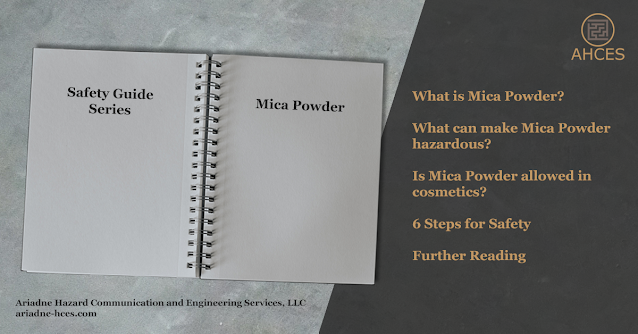Citronellol Safety Guide
What is Citronellol?
Citronellol, also known as dihydrogeraniol and 3,7-dimethyloct-6-en-1-ol, is a monoterpenoid, a type of organic compound. It is a major component of many essential oils, notably citronella oil, rose oil, and geranium oil. Citronellol is a popular ingredient in many floral fragrances and other cosmetic products such as hand creams. It also has use as a pesticide.
Citronellol has the CAS Number 106-22-9.
Notable Properties of Citronellol
At room temperature, citronellol is a colorless liquid. It has a distinct rose-like scent.
What Makes Citronellol Hazardous?
Citronellol is an irritant, with exposure to concentrated citronellol capable of causing irritation to the skin and eyes. Citronellol is a known human allergen, with dilute mixtures such as those found in perfume causing a reaction in sensitive individuals.
Citronellol Frequently Asked Questions
What makes up citronellol?
Citronellol is an organic compound with the molecular formula C10H20O.
Is citronellol the same as citronella?
No. Citronella refers to a plant, most often Cymbopogon nardus. Citronellol is monoterpenoid compound that is found in the oils of the citronella plant, as well as other plants.
Is citronellol bad for your skin?
Pure citronellol is an irritant, with exposure potentially causing irritation to the skin and eyes.
Dilute citronellol can cause allergic reactions to those with sensitivity to the substance. For those without an allergy to citronellol, it is safe to use in the amounts found in fragrances and cosmetics. If in doubt, seek advice from a licensed medical practitioner.
6 Steps for Safety
Step 1: Read the Warnings
When working with a product for the first time, always read all the safety documents first. This includes safety data sheets, which should be provided by the manufacturer or importer of the citronellol product. There may also be an OSHA chemical label, EPA pesticide label, or a Consumer Protection label on the packaging of the citronellol product. These documents all contain important information on the hazards of the product and instructions on how to mitigate those hazards.
Note that different citronellol products can have different safety considerations depending on the other ingredients.
Step 2: Prepare Your Workspace
Creating a safe workspace, sometimes referred to as engineering control, is a key component of working safely with any potentially hazardous substance.
Citronellol is a liquid in its pure form, which means it can easily flow when spilled, as well as seep into surfaces. Therefore, it is important to have a spill kit available with absorbent material to soak up and capture any spilled citronellol.
Step 3: Gather Your PPE
When working with concentrated citronellol, the following PPE is recommended depending on the engineering controls in place and quantities being handled.
- Gloves
- Basic disposable gloves, or other rubberized gloves, will prevent citronellol from touching the skin on the hands and causing irritation.
- Rubberized Apron
- A rubberized apron, or another body covering that prevents citronellol from soaking into clothing, is best to prevent skin exposure.
- Respiratory Protection
- A mask meant for organic vapors will protect the respiratory system from irritation.
- Eye Protection
- Safety goggles which form a protective seal around the eyes can be used to prevent citronellol splash from reaching the eyes.
Step 4: Clear Your Workspace
Having a clear workspace is important for safety as it can prevent accidents caused by tripping, as well as allowing you to easily spot any spills.
This is also a good time to ensure all engineering controls are functional. When working with large quantities of citronellol, it is good to have a spill kit on hand to contain liquid spills. Having materials such as activated carbon on hand can also be useful in the event of a large spill to help neutralize odors.
Step 5: Do The Work
If engineering controls and PPE are used properly, working with citronellol can be done safely.
If work cannot be completed in one sitting, be sure to properly seal any citronellol containers to prevent spills or accidental release when not in use.
Step 6: Clean Up
Citronellol may leave residue from any drips or small spills. Clean up citronellol with an absorbent material, such as paper towels, or a granular absorbent such as sawdust.
Be sure to dispose of any waste in accordance with local regulations.
Further Reading
The National Library of Medicine has a PubChem article on Citronellol.
Check out the Safety Guide Series Hub for more safety guides.
Sources Cited
Andersen, D. N., Holmberg, R. D., Larsen, J. R., Soborg, I., & Cohr, K. H. (2006). Survey and health assessment of chemical substances in massage oils. Survey of Chemical Substances in Consumer Products. https://www2.mst.dk/udgiv/publications/2006/87-7052-278-2/pdf/87-7052-279-0.pdf
National Center for Biotechnology Information (2024). PubChem Compound Summary for CID 8842, beta-CITRONELLOL, (+/-)-. Retrieved August 19, 2024 from https://pubchem.ncbi.nlm.nih.gov/compound/beta-CITRONELLOL.
National Center for Biotechnology Information (2024). PubChem Annotation Record for , Citronellol, Source: Hazardous Substances Data Bank (HSDB). Retrieved August 20, 2024 from https://pubchem.ncbi.nlm.nih.gov/source/hsdb/6805.
Pastor-Nieto, M. A., & Gatica-Ortega, M. E. (2021).
Ubiquity, Hazardous Effects, and Risk Assessment of Fragrances in Consumer
Products. Current treatment options in allergy, 8(1),
21–41. https://doi.org/10.1007/s40521-020-00275-7





Comments
Post a Comment